
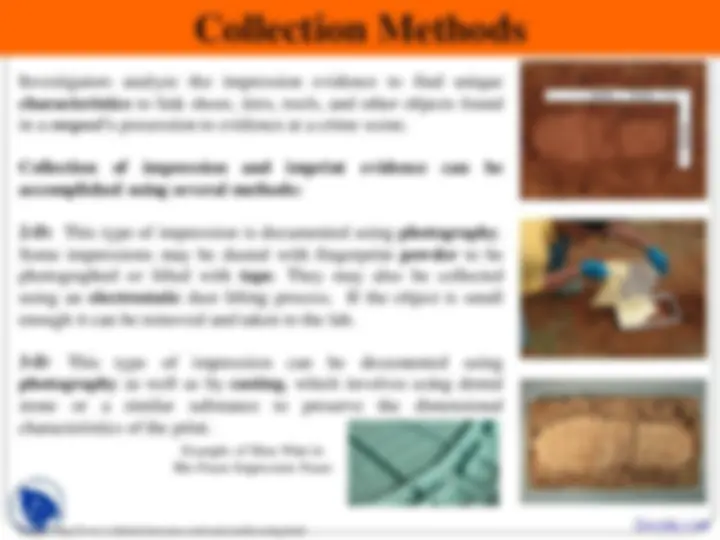

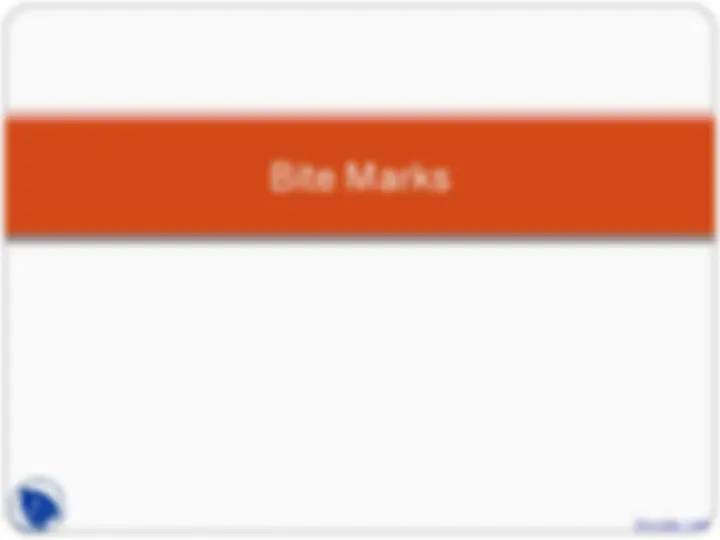
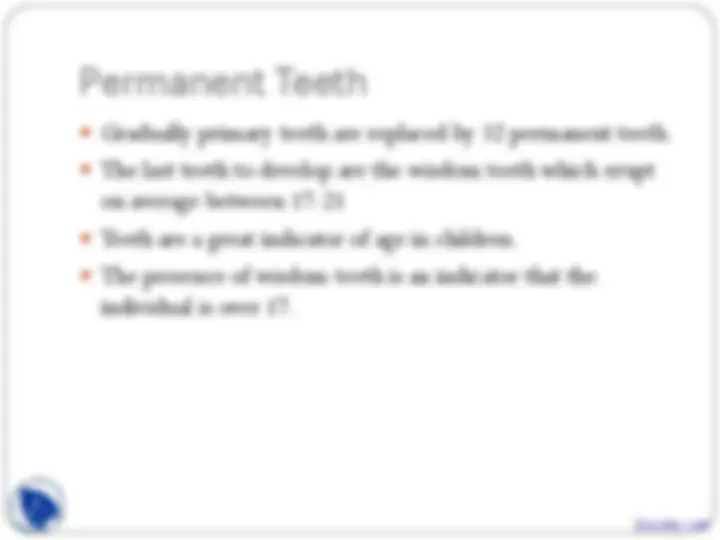
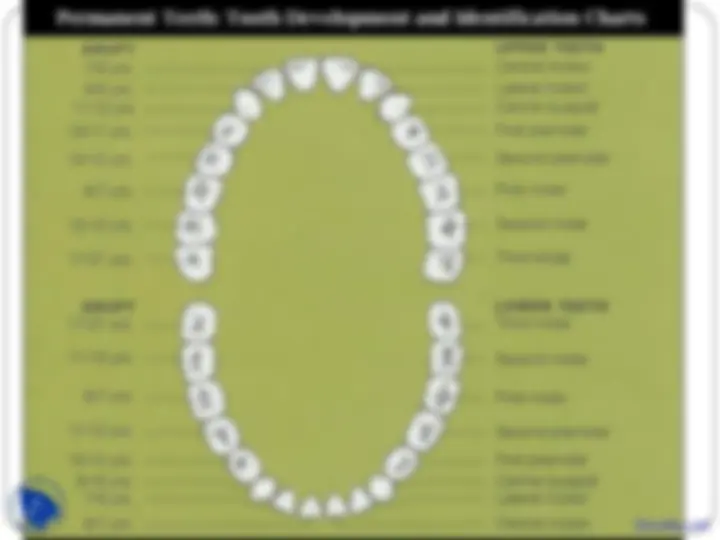



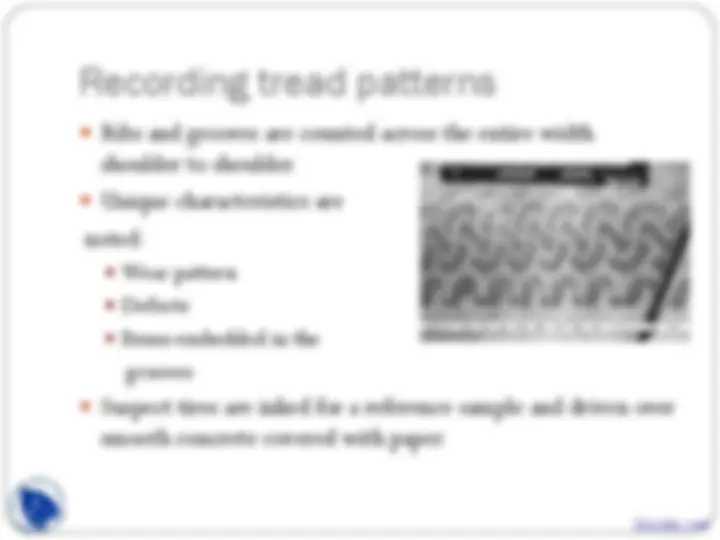

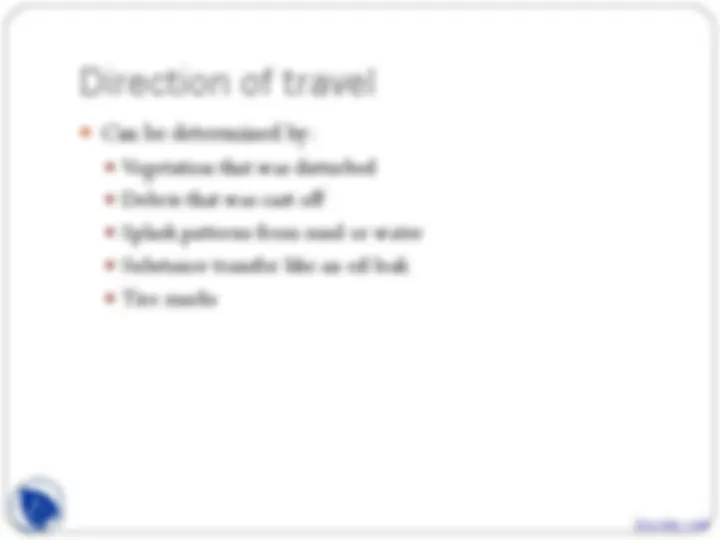
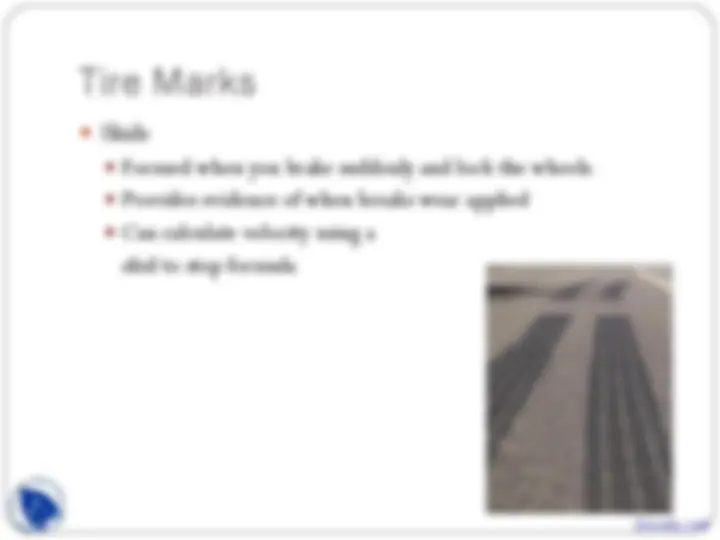

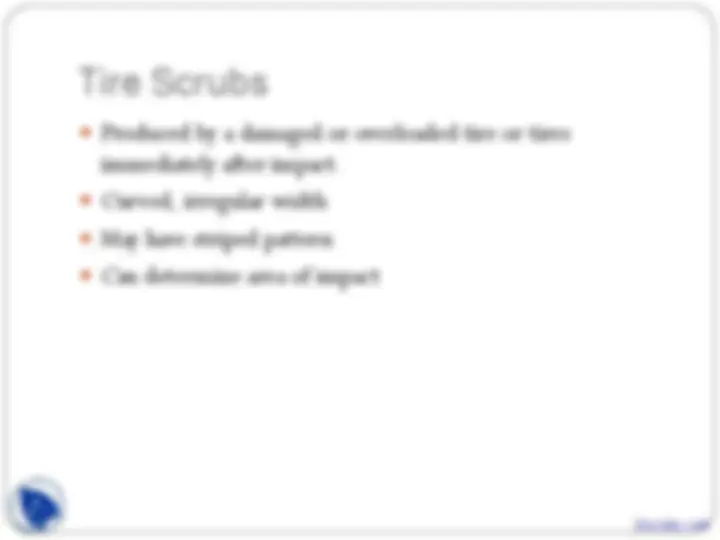
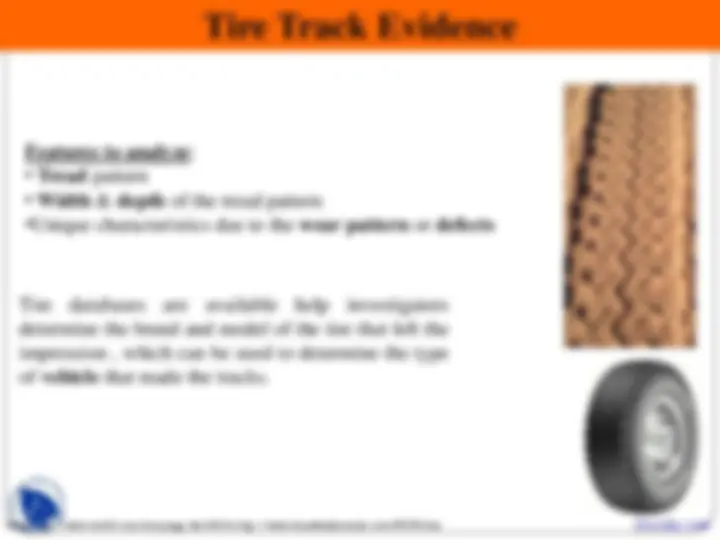
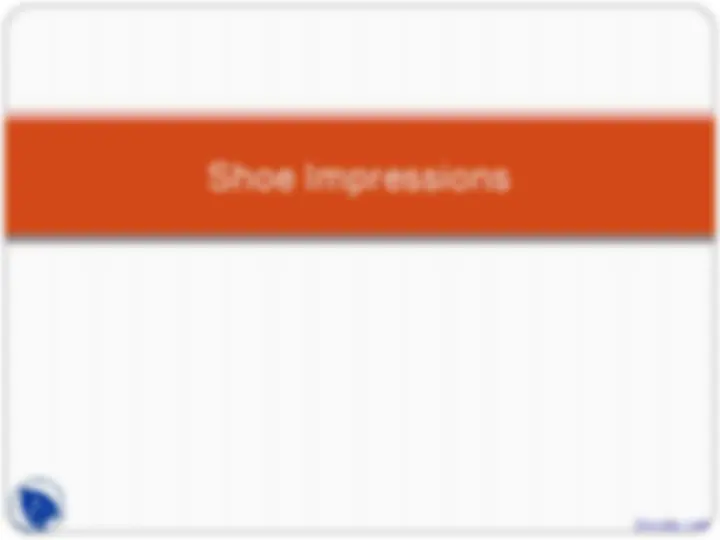

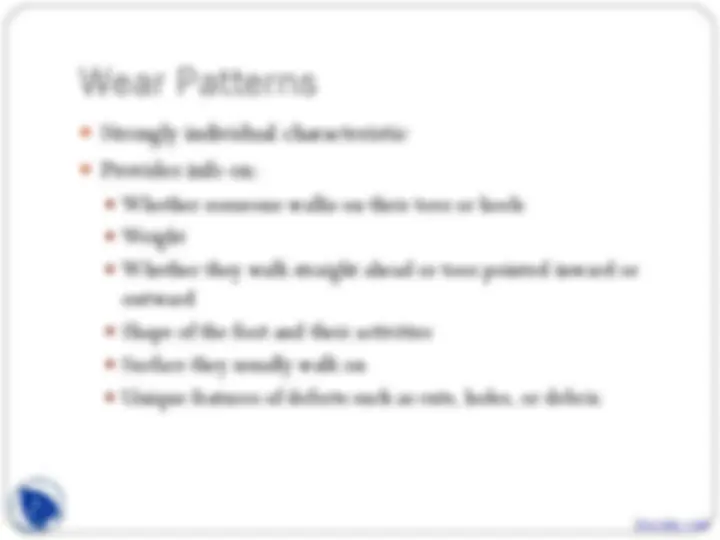
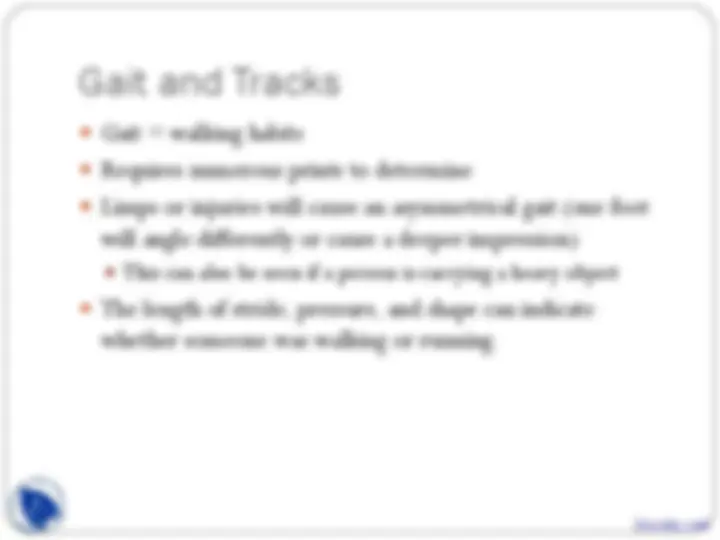
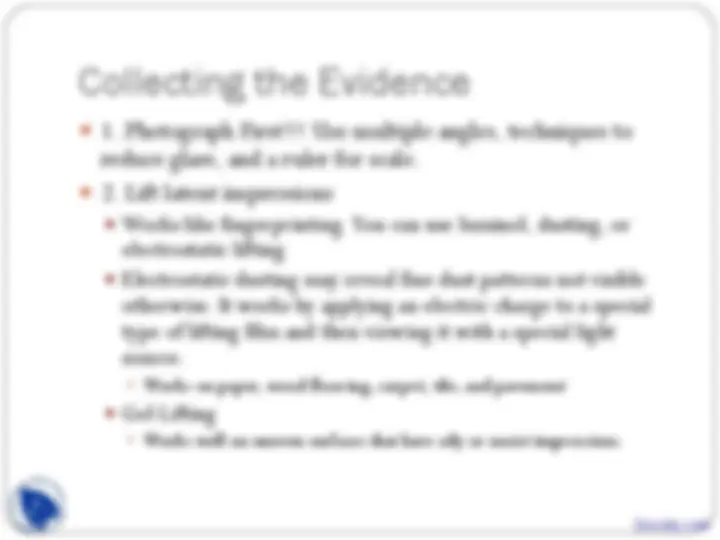
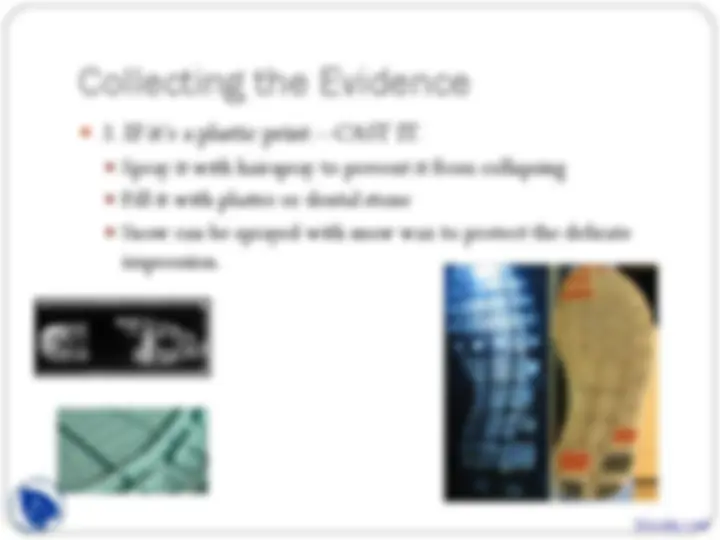

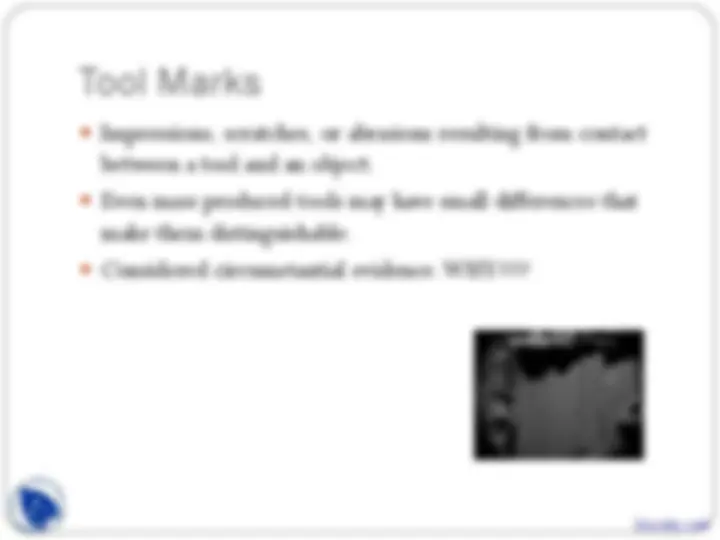
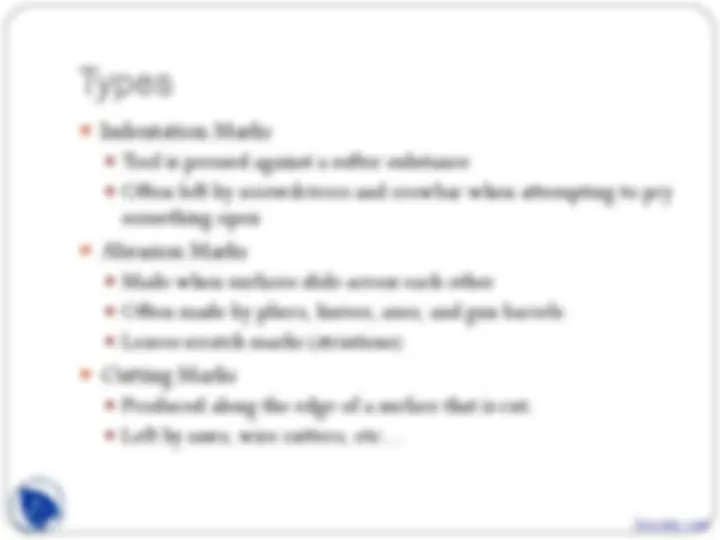
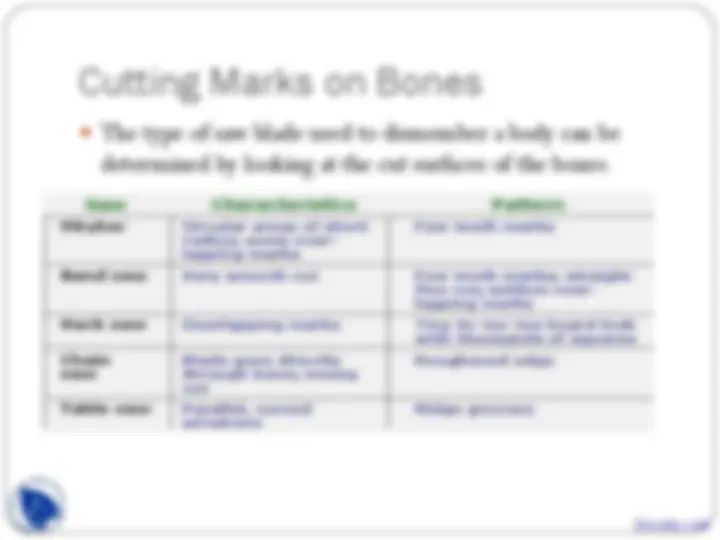
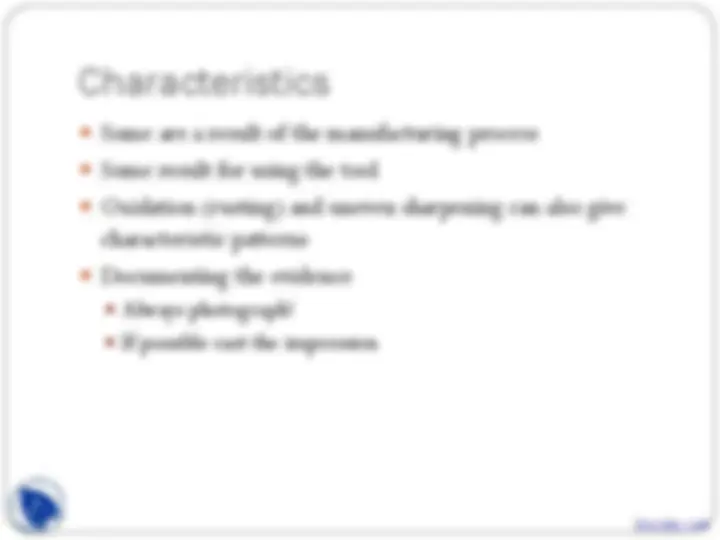
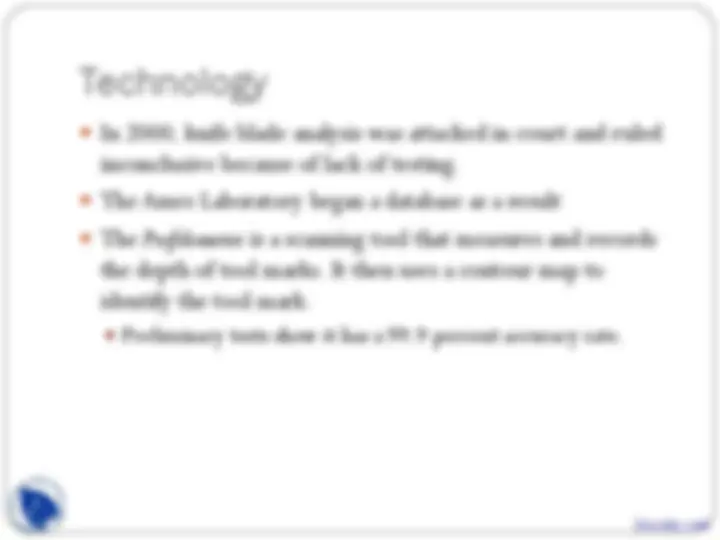

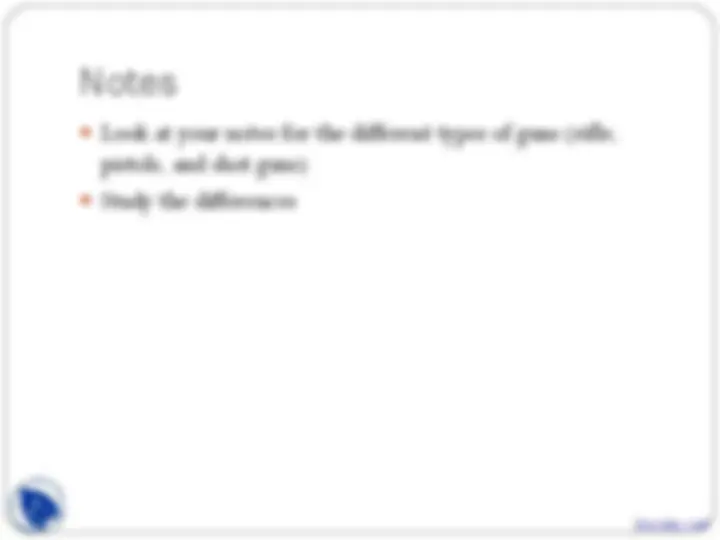
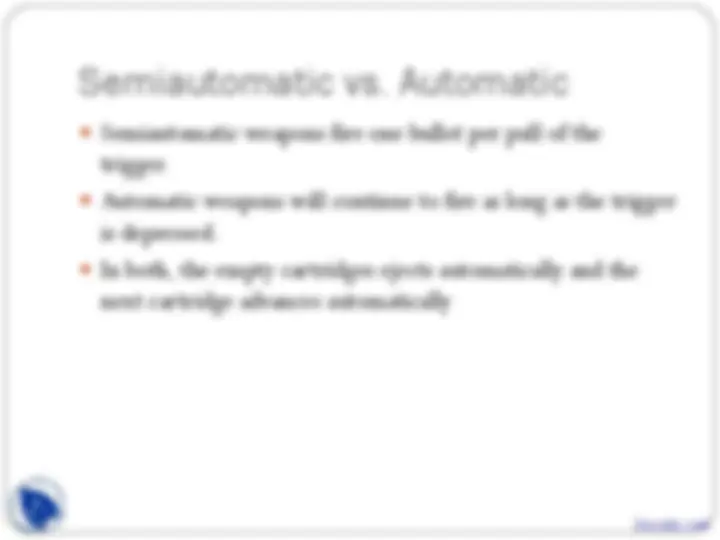
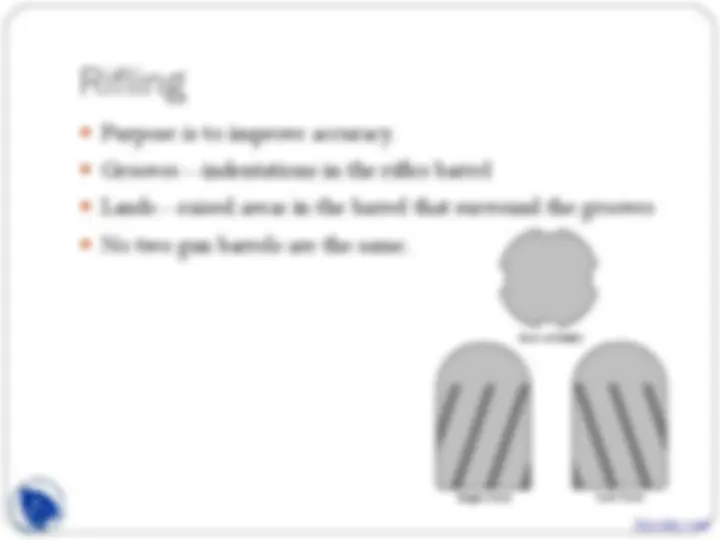
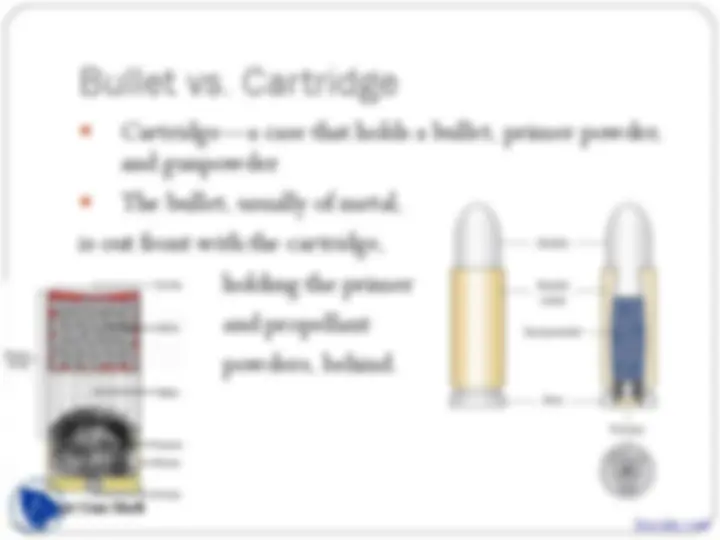

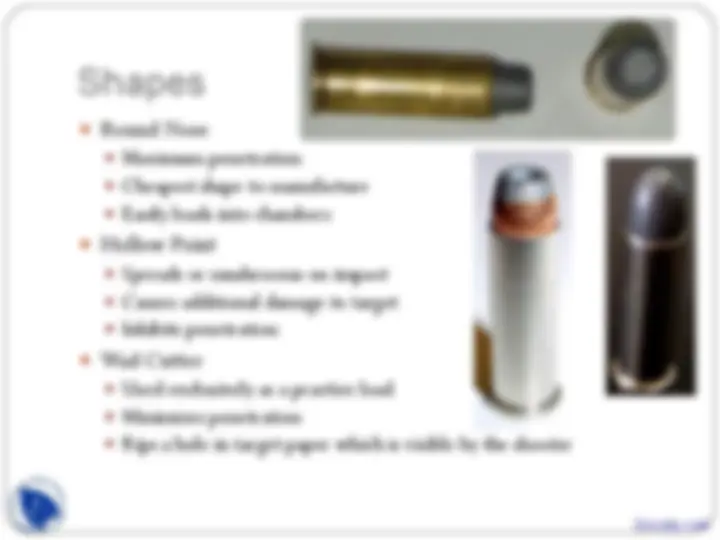

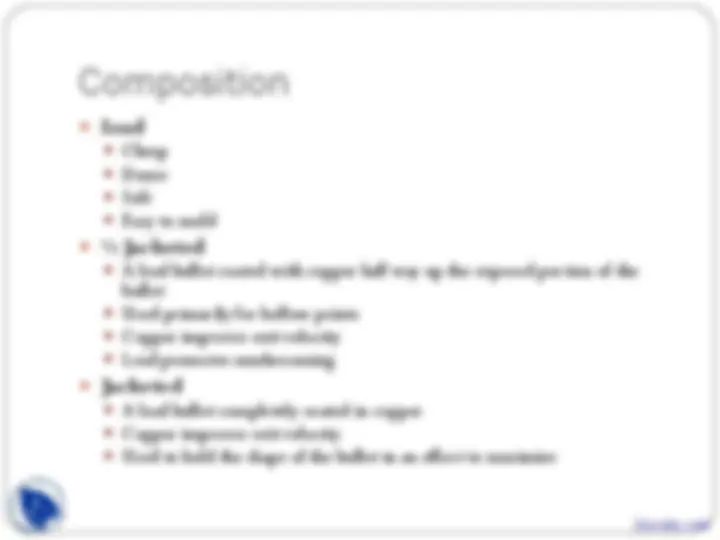
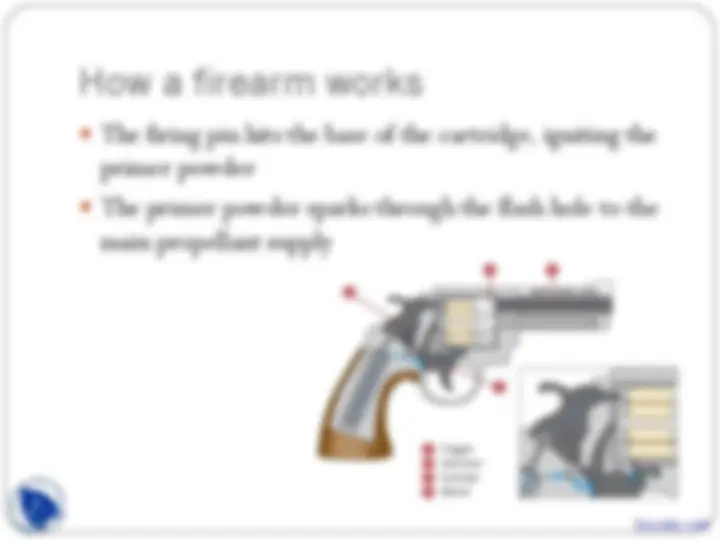
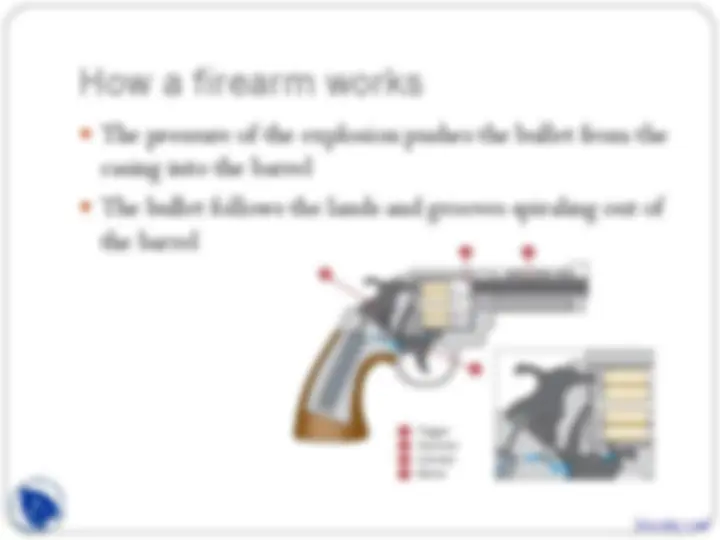
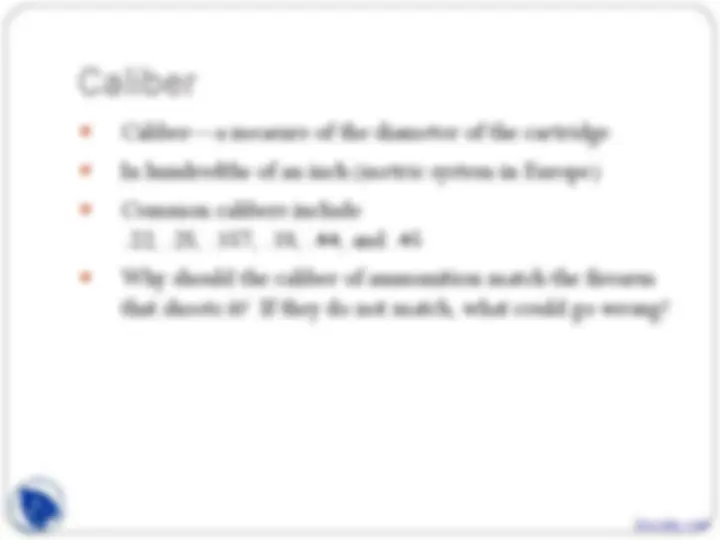
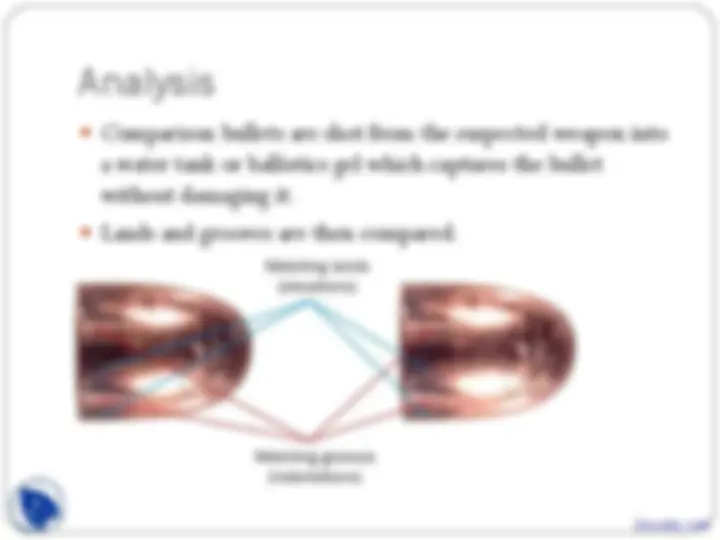
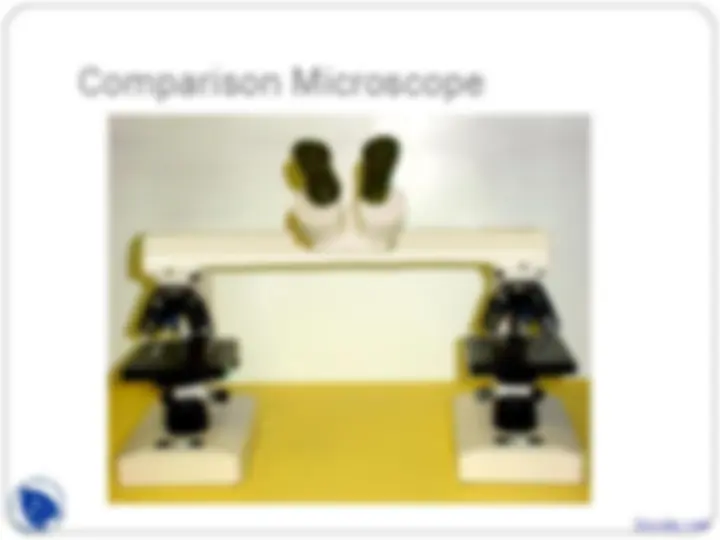
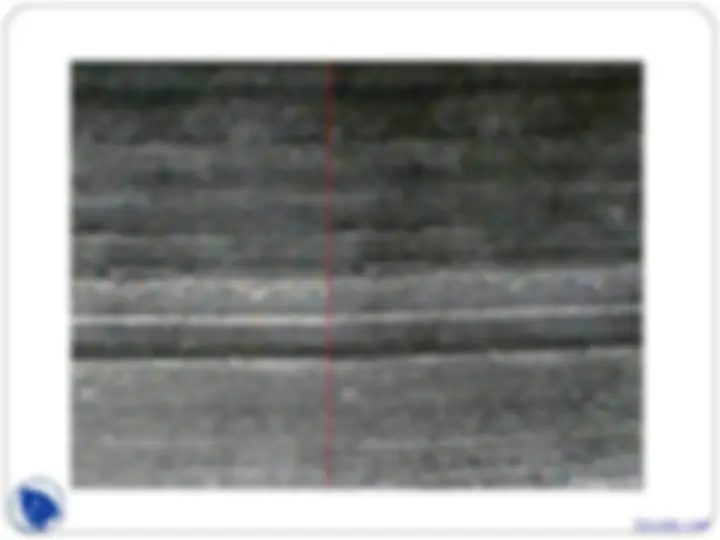
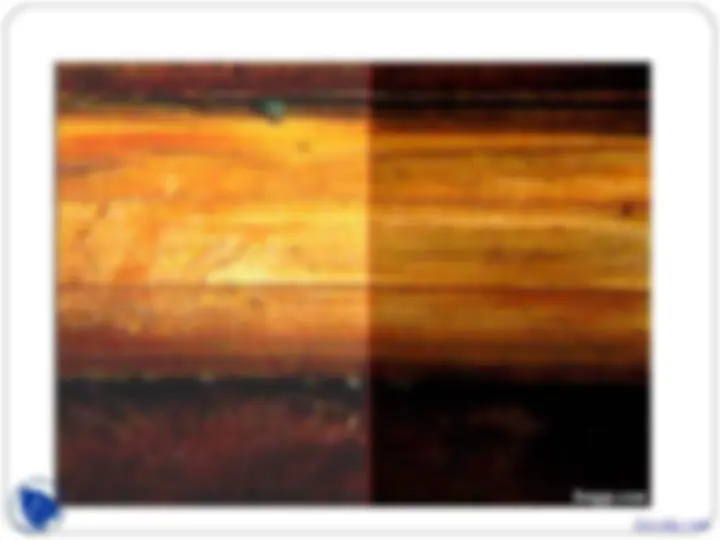


Study with the several resources on Docsity

Earn points by helping other students or get them with a premium plan


Prepare for your exams
Study with the several resources on Docsity

Earn points to download
Earn points by helping other students or get them with a premium plan
Community
Ask the community for help and clear up your study doubts
Discover the best universities in your country according to Docsity users
Free resources
Download our free guides on studying techniques, anxiety management strategies, and thesis advice from Docsity tutors
Forensic science (often shortened to forensics) is the application of a broad spectrum of sciences and technologies to investigate and establish facts of interest in relation to criminal or civil law. This lecture includes: Impression Evidence, Types of Impressions, Patent, Unaided Eye, Prints in Dust, Latent, Plastic, Made Permanent, Dimensional Imprints, Collection Methods
Typology: Slides
1 / 51

This page cannot be seen from the preview
Don't miss anything!












































Did you know? The most famous incident where bite mark evidence led to a conviction, was in the case of the notorious serial killer, Ted Bundy. He was responsible for an undetermined number of murders between 1973 and 1978 and was finally tied to the murder of Lisa Levy through bites that he had inflicted on her body.
Investigators can analyze bite marks for characteristics to help them identify victims or suspects as well as to exclude others. Marks can be left on a victim’s skin or other objects , such as Styrofoam cups, gum, or foods. Saliva or blood may be left behind that can be tested for DNA. Dental records including x-rays can also provide useful information, especially when attempting to identify a victim.
Features to analyze:
Bite Mark Evidence Video